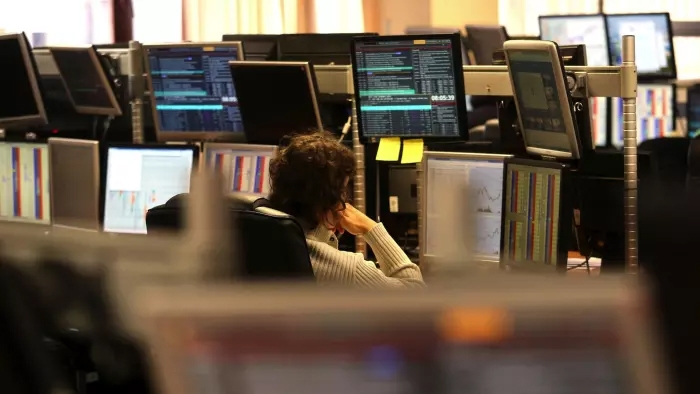
Risk asset markets have continued to rise overnight on growing hopes for a global growth rebound later this year. Equity markets are higher again, risk-sensitive currencies (including the NZD) have appreciated, and global rates have increased.
The predominant theme in markets is one of growing optimism for a global economic recovery as countries reopen their economies. Market sentiment has not been dented by the recent protests in the US nor the ongoing US-China tensions that linger in the background. Equity markets have extended recent gains, with European benchmarks up by 3-4% overnight and the S&P500 1.3% higher. Bank stocks, which have a leveraged exposure to the economy, have led gains on the S&P500 overnight (+5%), with other growth-sensitive sectors such as industrials and energy also performing strongly. The Russell 2000 small-cap index has outperformed, up 2.9%.
Economic data over the past 24 hours supports the notion that the worst point may have passed for the global economy. The ISM non-manufacturing index rose modestly from 41.8 to 45.4. But the important business activity (41 vs 26 prev.) and new orders (41.9 vs. 32.9 prev) subgroups rebounded strongly, albeit to levels that still imply contraction. The ADP employment report pointed to a loss of almost 2.8 million US jobs in May, much better than economist expectations and potentially pointing to an upside surprise to nonfarm payrolls tomorrow night (8m job loss expected). As countries and cities continue to reopen (New York city, a previous hotspot for COVID-19, is expected to start reopening from Monday) economic growth will subsequently rebound.
In China, the Caixin Services PMI, covering mainly small and medium sized firms, rose by much more than expected, to 55 in May from 44.4 previously. The overall index and its new orders component reached their highest levels since late 2010. Caixin noted that activity was boosted primarily from domestic demand recovering following the earlier easing of restrictions, while external demand remained weak.
Global rates, which to this point have been largely unresponsive to the risk-on sentiment in other markets, have finally moved higher. The 10-year US Treasury yield is 8bps higher overnight, to 0.76%, its highest level since mid-April, following similar sized moved in the European bond market. NZ rates moved higher yesterday due to global forces, by 6bps in the 10-year swap rate (to 0.8%) and 5bps in the 10-year government bond yield (to 0.9%). NZ rates are likely to move higher again when trading opens this morning, given the overnight moves in global rates.
Recent currency market trends remain firmly in place, namely USD weakness and commodity currency outperformance. The Bloomberg USD index (BBDXY) has fallen for the fifth consecutive day (-0.35%) and now trades at its lowest level since mid-March. The BBDXY has fallen almost 4% since the middle of last month due to declining risk aversion, easing USD funding pressures and growing market optimism for a global growth rebound.
Ahead of the ECB’s monetary policy meeting tonight, in which the central bank is expected to increase its QE programme by €500b, the EUR is trading above 1.12, the first time since March. Despite USD weakness elsewhere, the JPY has fallen against the USD (-0.2%), owing to the risk-on market backdrop.
Commodity and risk-sensitive currencies continue to outperform. The market’s favoured global growth proxy, the AUD, got close to 0.70 yesterday afternoon before paring some of those gains overnight. It is trading this morning at around 0.6930, 0.5% higher than this time yesterday. The NZD is up almost 1% since yesterday morning, to 0.6430, its highest level since mid-February (excluding a brief spike in March). The NZD has increased almost 4% this month alone due to the combination of USD weakness, buoyant risk appetite and global growth optimism.
In central bank news, the Bank of Canada kept its policy rate and QE bond buying programme unchanged. The Bank said it appeared the impact of COVID-19 on the global economy has peaked and the Canadian economy appeared to have avoided the Bank’s most severe downside scenario. The Bank said it would reduce the frequency of some of its emergency operations, including its purchases of short-term bank paper and its term repo (collateralised lending) operations, due to the improvement in funding markets. But it said it would maintain its QE bond purchases “until the economic recovery is well underway.”
Oil prices are trading at their highest levels since mid-March, when a price war erupted between Saudi Arabia and Russia. The two countries have since mended ties and OPEC+ agreed to a record supply cut in April. Those supply cuts were scheduled to start tapering from next month and the group had originally been planning to meet later this week, although there are now doubts around its timing. Bloomberg reported overnight that Russia and Saudi Arabia had agreed to one-month extension to the current level of supply cuts but only on the precondition that other members abided by their individual quotas.

We welcome your comments below. If you are not already registered, please register to comment
Remember we welcome robust, respectful and insightful debate. We don't welcome abusive or defamatory comments and will de-register those repeatedly making such comments. Our current comment policy is here.